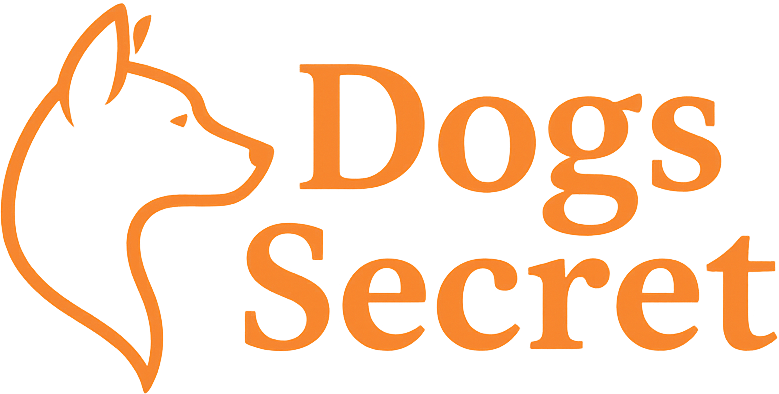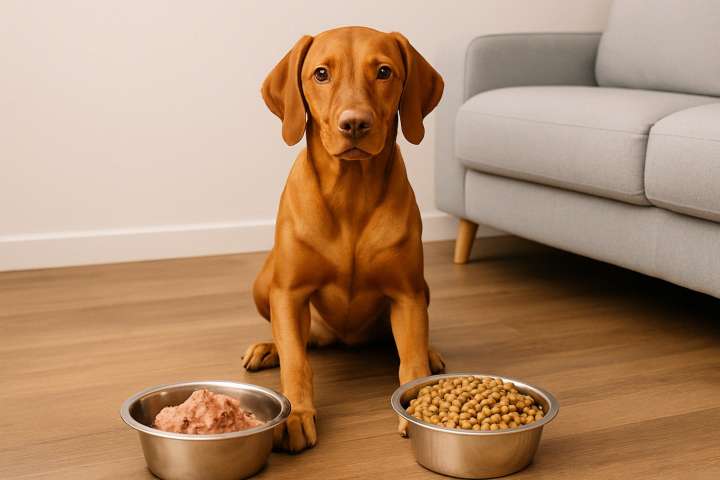Choosing between wet and dry dog food can be surprisingly complicated. Both options offer distinct benefits—and potential drawbacks—depending on your dog’s health, age, and preferences.
So, which one is better? The truth is, there’s no one-size-fits-all answer. In this guide, we’ll break down the pros and cons of wet and dry dog food, when to use each, and how to decide what’s right for your dog.
What’s the Difference?
Dry Food (Kibble) | Wet Food (Canned/Pouches) | |
|---|---|---|
Moisture | 6–12% | 70–85% |
Texture | Crunchy | Soft, moist |
Shelf Life | Long after opening (if sealed properly) | Short once opened |
Price | Usually more affordable | Often more expensive per serving |
Storage | Easy to store | Requires refrigeration after opening |
✅ Benefits of Dry Dog Food
- Dental Health Support
Crunchy kibble helps reduce tartar buildup and promote healthier gums (though not a replacement for brushing). - Convenience
Easy to store, measure, and feed—ideal for busy owners. - Cost-Effective
Typically less expensive per meal, especially for large dogs. - Long Shelf Life
Doesn’t spoil quickly and is ideal for automatic feeders.
✅ Benefits of Wet Dog Food
- Higher Moisture Content
Helps with hydration—especially beneficial for dogs who don’t drink much water or have kidney issues. - More Palatable
Strong aroma and texture often appeal to picky eaters or dogs with appetite loss. - Easier to Chew
Great for senior dogs or those with dental issues or missing teeth. - Higher Protein (in some cases)
Many wet foods have a higher meat content per serving.
🚫 Drawbacks of Dry Dog Food
- Can be harder to chew for small breeds or seniors
- Lower moisture content may not be ideal for dogs with kidney or urinary issues
- Less palatable for picky eaters
- Can contain more fillers or artificial additives in lower-quality brands
🚫 Drawbacks of Wet Dog Food
- Spoils quickly once opened
- Can contribute to dental issues without proper oral care
- More expensive per calorie
- Messier to serve and store
Which Dogs Benefit Most from Wet Food?
- Seniors or dogs with missing teeth
- Dogs recovering from illness or surgery
- Small breeds with small appetites
- Dogs with kidney disease (if recommended by vet)
- Picky eaters or those with poor appetite
Which Dogs Benefit Most from Dry Food?
- Large breeds (cost-effective for high calorie needs)
- Dogs prone to tartar buildup
- Puppies learning to chew (larger kibble sizes help jaw development)
- Owners using automatic feeders or puzzle toys
What About Mixing Wet and Dry Food?
Combination feeding is a popular strategy that offers the best of both worlds:
- Wet food adds flavor and hydration
- Dry food supports dental health and structure
- Helps with calorie control (by adjusting ratios)
Tips for mixing:
- Keep total calories within daily needs
- Mix thoroughly to prevent selective eating
- Refrigerate leftover wet food immediately
How to Choose the Best Option
Ask these questions:
- Is your dog a senior, picky eater, or on a medical diet? → Wet food may help
- Is your dog healthy and active, with no dental issues? → Dry food may be perfect
- Are you trying to save money or feed a large dog? → Dry food is more cost-efficient
- Are you open to combining both for balance and variety? → Try combination feeding
And always ensure the food (wet or dry) is:
- AAFCO-approved
- Appropriate for your dog’s life stage and breed size
- Made by reputable, transparent brands
Conclusion
There’s no universal answer to the wet vs. dry dog food debate—only what works best for your dog’s body, age, and preferences. The key is to focus on ingredient quality, nutritional balance, and your dog’s unique needs.
Want a printable comparison chart or a vet-approved feeding plan? Visit our Dog Feeding Resource Center for tools to help you decide.

